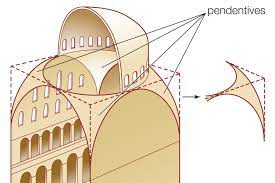 |
| Tiffany window of Charlemagne and Alcuin at LaFayette College (1898) |
We know little about the early life of Alcuin (c.735-804). He came to the cathedral school of York under Archbishop Ecgbert (died 766), who took a great interest in Alcuin's schooling. It was here that Alcuin blossomed into a scholar of liberal studies, helping to develop the curriculum of the York cathedral school to embrace the Trivium (Grammar, Rhetoric, and Logic) and Quadrivium (Arithmetic, Music, Geometry, and Astronomy). Alcuin himself wrote a textbook on the former, leaving the latter to his student, our old friend Hrabanus Maurus (previously mentioned here).
Sometime after Ecgbert died, Alcuin became the head of the school.* In 781, on his way home from a trip to Rome to see the pope (his mission was to petition the pope to confirm York as an archbishopric, the second in England after Canterbury), he met, for the second time, Charlemagne, who convinced him to stay and help promote learning in Charlemagne's kingdom.
Alcuin settled in the palace school at Aachen in 782, working alongside several of the intellectual lights of the 8th century, such as Peter of Pisa, a grammarian brought there to teach Latin, and Paulinus of Aquileia, a theologian and grammarian who became a good friend of Alcuin's, maintaining a relationship through letters even after Paulinus left the court to take up the position of Patriarch of Aquileia.
The other way that Alcuin was "liberal" is in his attitude toward pagans. Charlemagne followed the not-uncommon Christian royal practice of outlawing paganism, offering conquered pagan peoples the choice of conversion or death. Alcuin objected to this, and made his reasons clear to Charlemagne:
"Faith is a free act of the will, not a forced act. We must appeal to the conscience, not compel it by violence. You can force people to be baptized, but you cannot force them to believe."Charlemagne eventually abolished the death penalty for paganism.
Alcuin died on the 19th of May 804.
*This school still exists today as St. Peter's.







